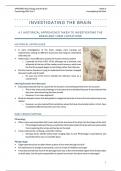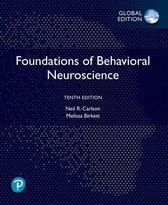Samenvatting
Summary Investigating the Brain Notes for BSc Psychology: Psychology and the Brain
- Vak
- Instelling
- Boek
Complete revision and summary notes for Investigating the Brain for BSc Psychology: Psychology and the Brain Module. Written by a straight A* King's College London student set for a 1st. Well organised and in order. Includes diagrams and full reference section and collated information from lec...
[Meer zien]





